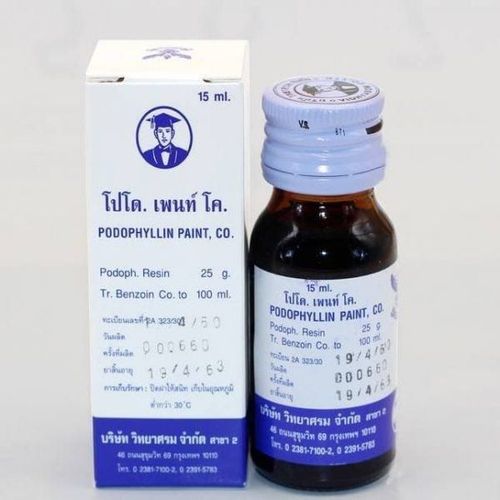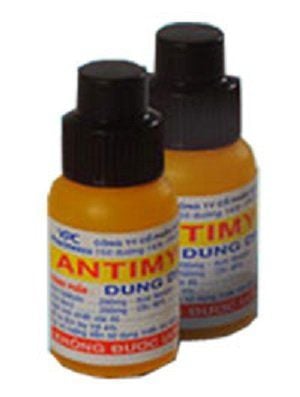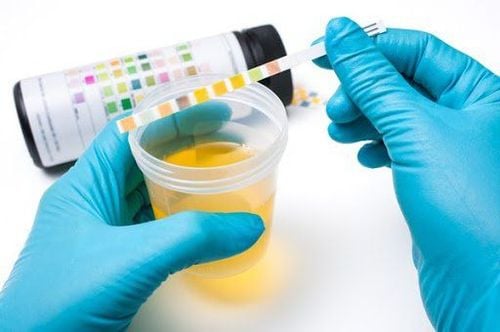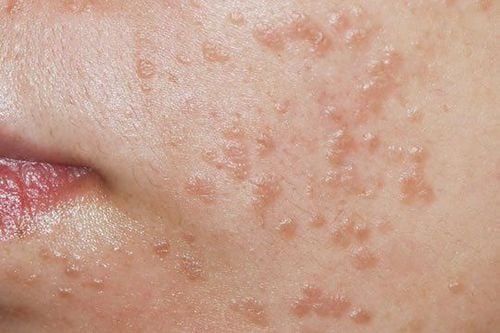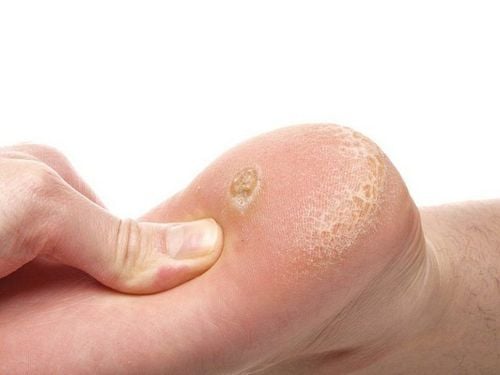This is an automatically translated article.
Warts are generally harmless growths on the skin. They are very common, affecting about one in five children and infants. Warts can appear anywhere on the skin or mucous membranes (eg, mouth, genitals). However, they are most commonly found on the hands, fingers, feet, and face. Warts can be spread to other people, usually by skin-to-skin contact. Scratching can lead to the spread of warts on other areas of your child's skin. Warts can also be spread indirectly through swimming pools or public showers, especially if your child is barefoot and they have scrapes or cuts. Slippers should be worn in public pools and bathrooms. Warts are small, firm bumps on the skin caused by viruses from the human papillomavirus (HPV) family. In this article, we explain how babies and children get warts, how it can affect them, and how it's diagnosed and treated.
1. How to detect warts in babies
Warts are quite common in children, especially for hyperactive children, often curious to learn about everything around. However, warts are very rare in infants under two years of age. Here are the types of warts that children can get:
Common Warts : Common warts can appear anywhere on a child's body but are most common on the hands, especially on the hands. is around fingernails or where the skin is broken. Warts are hard and coarse to the touch and tend to take on the shape of small, specifically colored domes. Plantar warts: As the name suggests, plantar warts are usually found on the bottom of the feet. They can be quite painful and make the child feel like they are stepping on small, sharp stones. These warts look like hard patches of skin and may have small black spots on them. Filiform warts: Filiform warts are usually found around the mouth, eyes, or nose. They have a finger-like shape and are often quite distinctive in color.
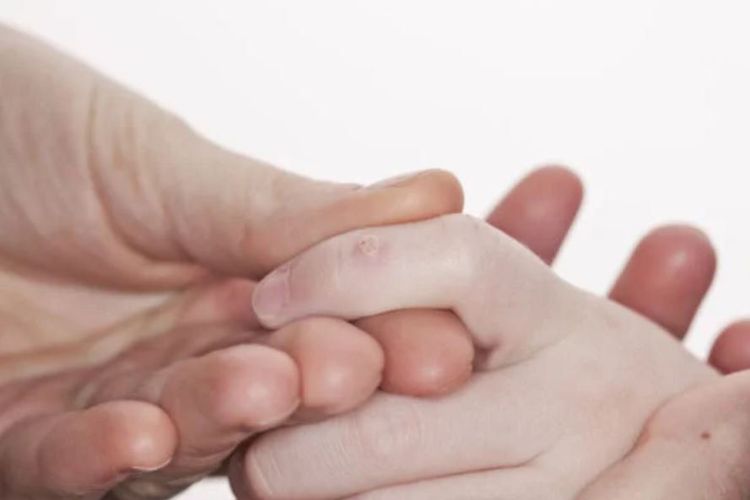
Phát hiện các trường hợp mụn cóc ở trẻ sơ sinh thông qua hình dạng
2. Are warts contagious?
Warts are not contagious, but children can get this virus from direct contact with people who have warts or from touching objects that cause the wart to break, such as towels.
For children, the risk of spreading warts to other areas of the body is increased because children often use their hands to pry or break the wart, causing the virus to spread to other areas of the skin, especially places. broken, cracked skin or open wounds.
3. Treatment of warts in babies
Parents of children can completely do not need to intervene in their child's warts because according to dermatologists, about 60% of warts will disappear on their own in up to 2 years after that. Even with treatment, it can take several months to completely treat the wart. Unless warts appear on your child's face, start with acne medications as directed by your doctor. Dosage, time of taking... of these drugs are also fully written on the product packaging. In general, to treat infant warts, parents should follow these steps:
Soak the warts in warm water for about 5 minutes a day, preferably before bedtime. If warts appear dense, gently file their surface with a nail file or pumice stone and be sure not to use those tools for any other purpose Apply medication to the wart, avoid Apply to the surrounding skin. When the medicine has dried, cover the wart with a bandage and leave it overnight. Wash your hands with soap and water after touching the wart to prevent the virus from spreading. Repeat the above steps daily until the acne clears up, which usually takes 2 to 4 months. If your baby's warts are getting worse, show no signs of improvement, and keep coming back, see your doctor for diagnosis and treatment or refer you to another dermatologist. They may prescribe stronger wart medications or drugs that stimulate the immune system to fight the virus. In rare cases, doctors may recommend using freezing and scraping the acne.
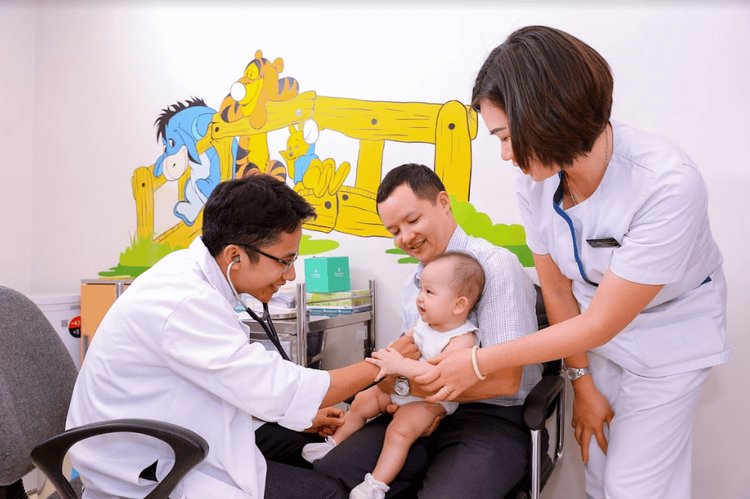
Cha mẹ nên đưa trẻ đến gặp bác sĩ để được thăm khám và điều trị sớm tình trạng mụn cóc
4. When to Call the Doctor About Baby Warts
Parents of children with warts may consider calling a dermatologist or taking their child to a medical facility to examine and treat warts in the following situations:
Warts cause pain in children, spreading or so thick that the child is embarrassed, does not dare to go to school or participate in other social activities Warts show signs of rapid growth or change in color Warts appear to be infected. Signs of infection include red streaks, discharge, pus, or a fever with no known cause. However, the possibility of wart infection is relatively rare. If warts appear on the child's anus, genitals, or in the mouth. Of note, this can be the case with venereal warts, which are sometimes acquired during childbirth and take years to appear. Venereal warts also increase a child's risk of sexual abuse.
5. Preventing Baby Warts
Although there is no specific method to prevent warts, parents of children can apply the following tips to reduce the risk of contracting the virus that causes warts in their children. Specifically:
Wash hands frequently Wear socks or shoes frequently in changing rooms, around swimming pools and public bathrooms. Do not let your child share towels or toiletries with other children in the class. Clean and bandage the wound carefully. Finally, make sure your child has received the HPV vaccine. This vaccine protects against genital warts and certain strains of the virus that have been linked to an increased risk of cervical cancer in women and the penis in men. The HPV vaccine is usually recommended when a child reaches the age of 11 or 12. This vaccine works best when the person gets it before being exposed to the types of HPV that can cause genital warts and the types of HPV that can cause genital warts. genital cancer. Warts are inflammatory conditions caused by one of more than 100 strains of the human papillomavirus (HPV). These viruses can enter the body through small cuts or scrapes and grow slowly for a few months before the formation of pimples. Most types of warts can be completely cured if the child's parents use acne medications as directed by the doctor, the treatment process can take several months. In addition, parents can choose to let acne go away on its own with mild cases, sparse and few acne. Usually, warts in children will not last more than 2 years.
At Vinmec International General Hospital, there is a package of examination and advice on treatment of atopic dermatitis to help customers assess the overall condition of the disease and advise on measures to help prevent recurrence.
When registering for a package of examination and consultation for treatment of atopic dermatitis, customers will receive: Dermatology specialist examination. Perform tests such as: quantitative IgE, fresh mycobacteria, specific IgE quantification with respiratory allergens - food (Panel 1 Viet), test Rida Allergy Screen (panel 1)...
If there is a need for medical examination at Vinmec Health System nationwide, please make an appointment on the website to be served.
Please dial HOTLINE for more information or register for an appointment HERE. Download MyVinmec app to make appointments faster and to manage your bookings easily.
References: babycenter.com, webmd.com, mydoctor.kaiserpermanente.org




